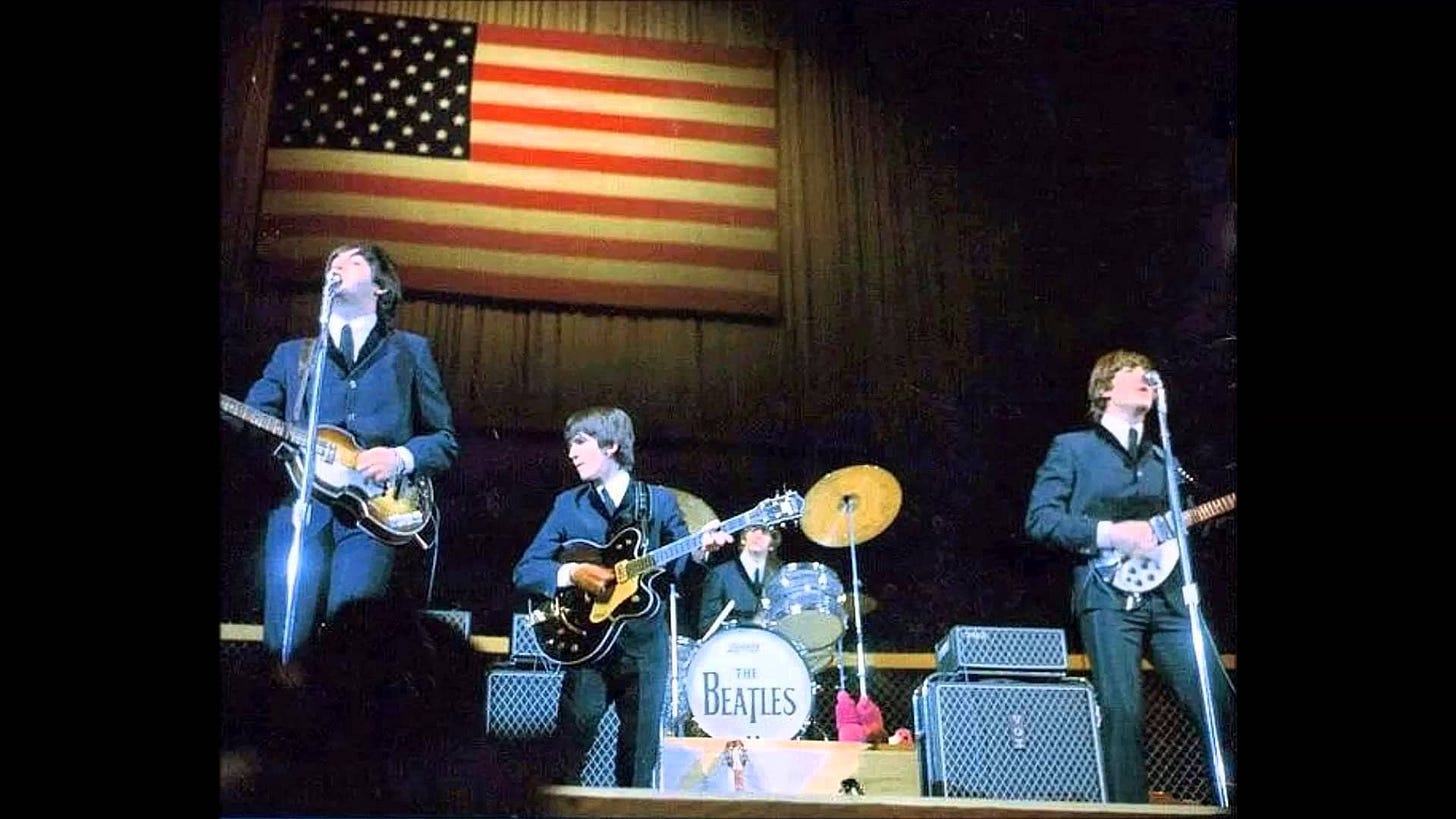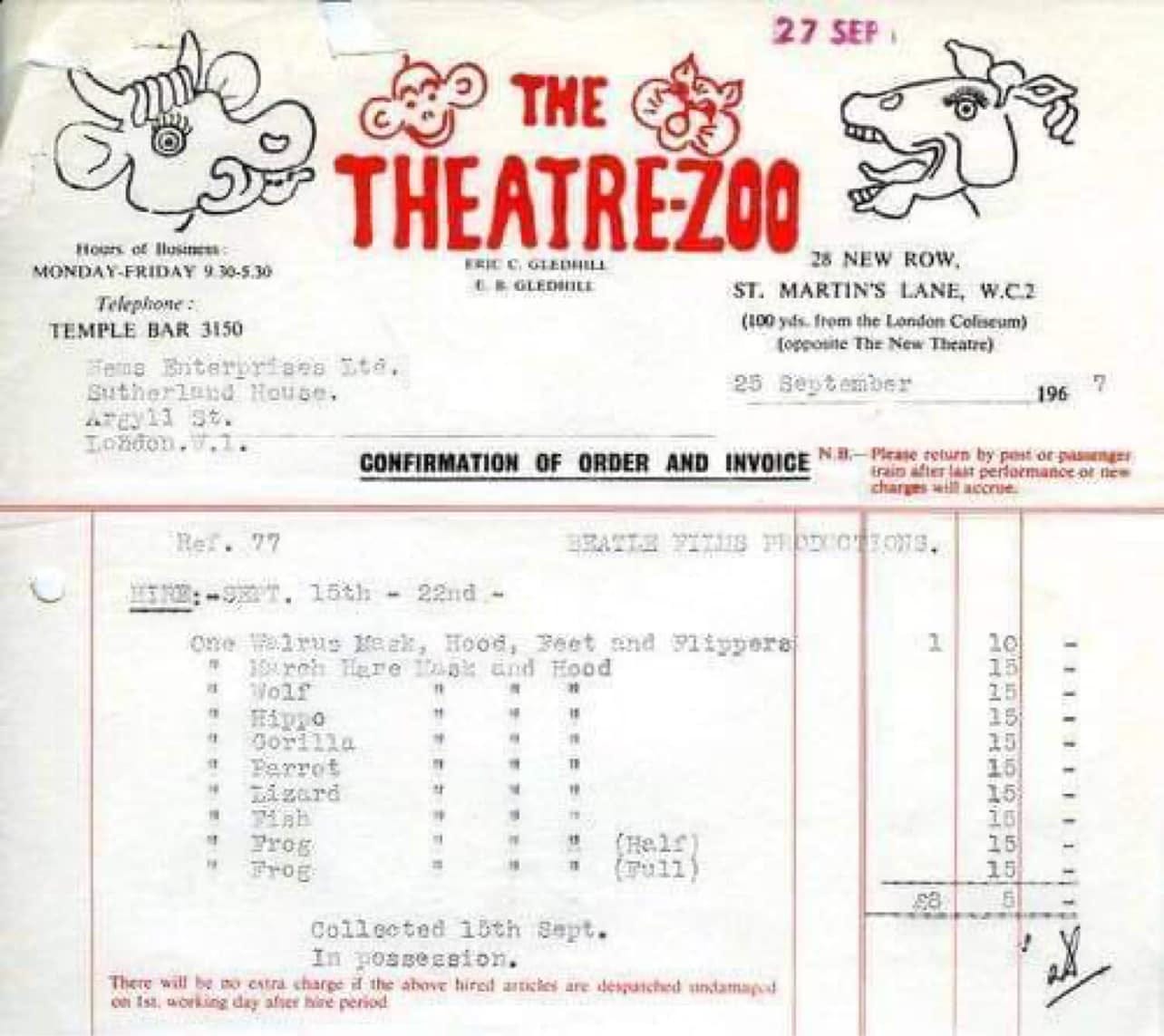1967’s Magical Mystery Tour is a crisis project. After the success of Sgt Pepper the Beatles suffered the shock of their manager dying. Out of nowhere.
Desperate to keep going, The Beatles - spurred on by McCartney - decided to make an experimental film that at the time was seen as a dud, but has aged better as a statement piece. It’s a great example of how The Beatles assimilated as much as they created, and how much beatnik counter-culture was folded back into a black-and-white England that was about to burst into colour.
»»»Fast forward
I now know that it was early February 19871 when my cousin Sophie phoned to ask if I wanted to go to a gig in Finsbury Park, at the ‘Sir George Robey’ pub. It was only a 20-minute walk from my parents’ house in Canonbury, so I jumped at the invitation.
Though I had no idea what to expect, it turned into one of those magical nights you don’t forget in a hurry: in a dark and sweaty backroom - buoyed up on a sea of skanking - I marvelled to the voice, energy and ska sounds of the late, great, Desmond Dekker. I remember loving it so much I had to make a beeline for HMV the very next morning to snap up a compilation featuring ‘007’, ‘Israelites’, ‘It Mek’ and more. It has a bright green cover, and I still love it.
«««Rewind
The Sir George Robey’s gone now, but it was there in 1963, and looked something like this, except that back then it was known as the ‘Clarence Tavern’:
And it’s the Clarence Tavern, a stone’s throw away from the Finsbury Park Astoria, where the Beatles go for a photoshoot ahead of their Christmas shows of 24th-21st December 1963. So yes, I’ve stood on the same spot as The Beatles.
Here’s a sample:

Weeks after they ended their stint in Finsbury Park, and their world turned into colour, indeed a kind of Wonderland - as McCartney himself has stated - when their US tour landed in Miami:
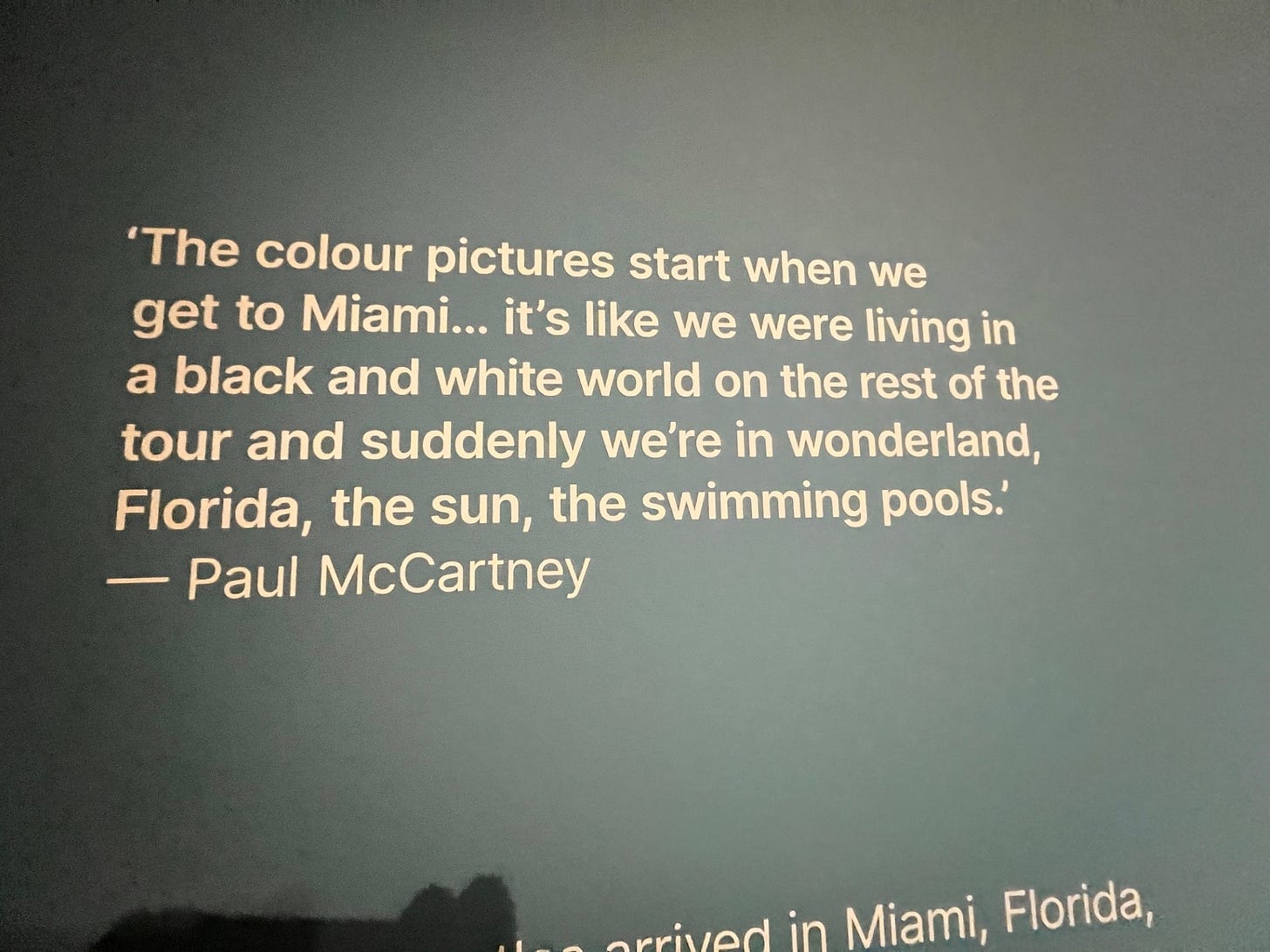
Here’s what Paul is on about: Miami as semi-tropical technicolor utopia that’s a million miles from gritty North London, and a breath of fresh air for the Fab Four.
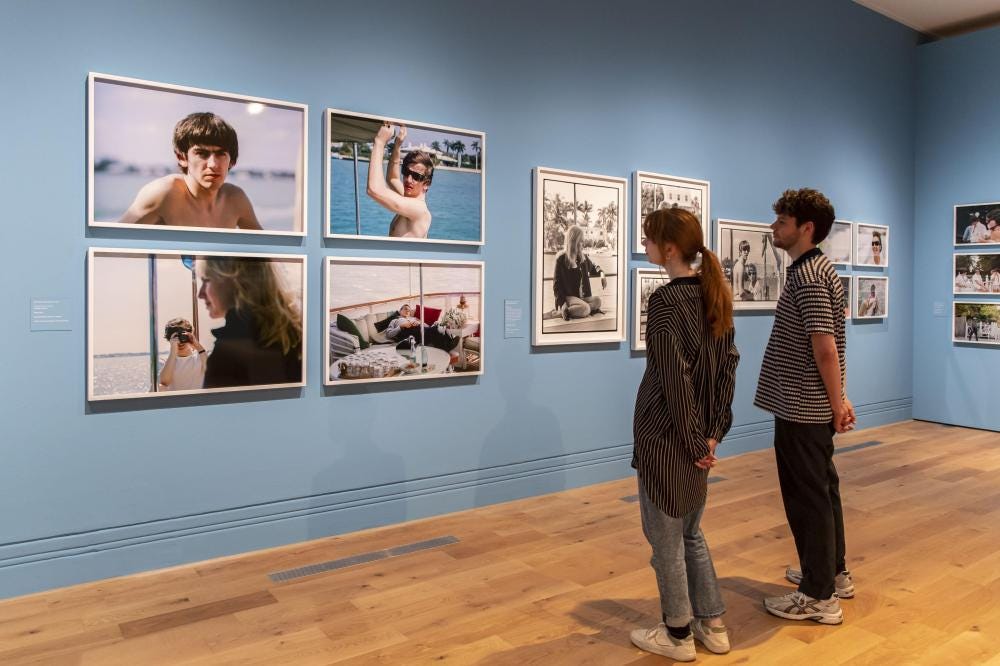
Not long after that, on June 14th 1964 (in La Honda, California) Ken Kesey and his ‘Merry Pranksters’ hit the road, in their psychedelic painted school bus ‘Furthur’:
The bus tour, according to Wolfe, was intended to help people break out of their own “little script” and prevent them “acting [their] movie out like mad”,2 or to quote Kesey later:
“It isn’t by getting out of the world that we become enlightened, but by getting into the world…by getting so tuned in that we can ride the waves of our existence and never get tossed because we become the waves.”
-Ken Kesey, Kesey’s Garage Sale
‘Furthur’, the bus, is driven by Neal Cassady, the model for Dean Moriarty in Kerouac’s On The Road, decades earlier. For the way it captures the spirit, language and episodes of the time, I can’t recommend Tom Wolfe’s account of the trip highly enough:
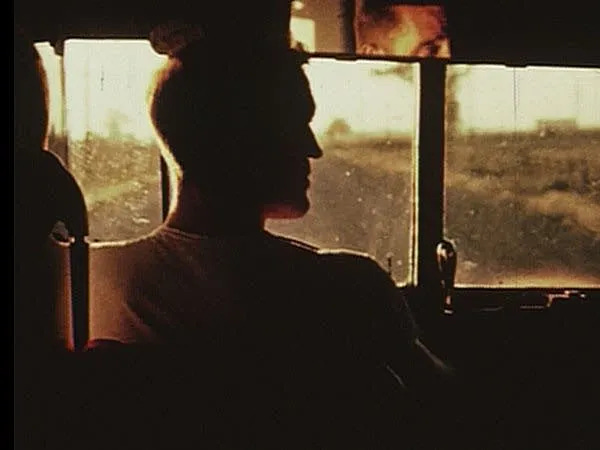
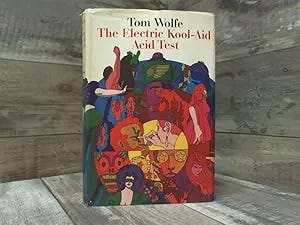
At some point during the Acid Test era, Kesey and 30 of the pranksters end up going to see the Beatles at the Cow Palace in San Francisco (August 31st, 1965). It’s an awkward moment in the story, for various reasons, but it’s another piece in the interlocking jigsaw of influence.
While the Beatles were still playing ‘Twist and Shout’ and ‘Boys’, Kesey was subsisting on a diet of LSD and more LSD. Its source? Augustus Owsley, a man of many pseudonyms:
“Bear”, as he was popularly known, was a messianic figure, the so-called “Acid King” or “White Rabbit” whose LSD tabs fueled San Francisco’s flower power counter culture and helped shape the psychedelic era.
-Tony Hillier, “Trailblazing Bear Inspired the Dead”, World Central
We’ve already examined the way Alice’s journey instigator became the poster animal for the counter-culture. And how Grace Slick’s ‘White Rabbit’ - probably written around 1965, well ahead of its 1967 release - became the soundtrack for the Summer of Love.
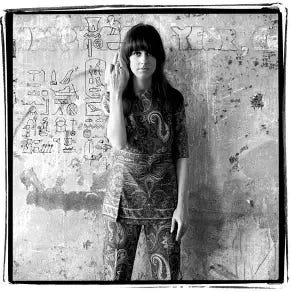
Slick attended happenings at ‘Olompali’ where some of Kesey’s famous “Acid Tests” took place, but there will have been many others.
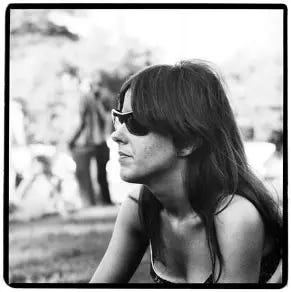
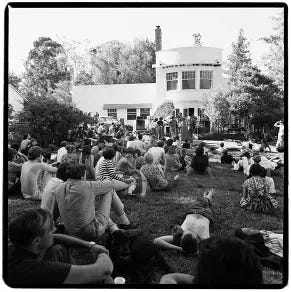
And for those that don’t know, it’s not just White Rabbit Carrollian imagery that proliferated in 1960s California. Some LSD blotters represent Alice, like this Tenniel-inspired one. Thanks to Alan Tannenbaum for sharing his version, signed by seven Merry Pranksters.3
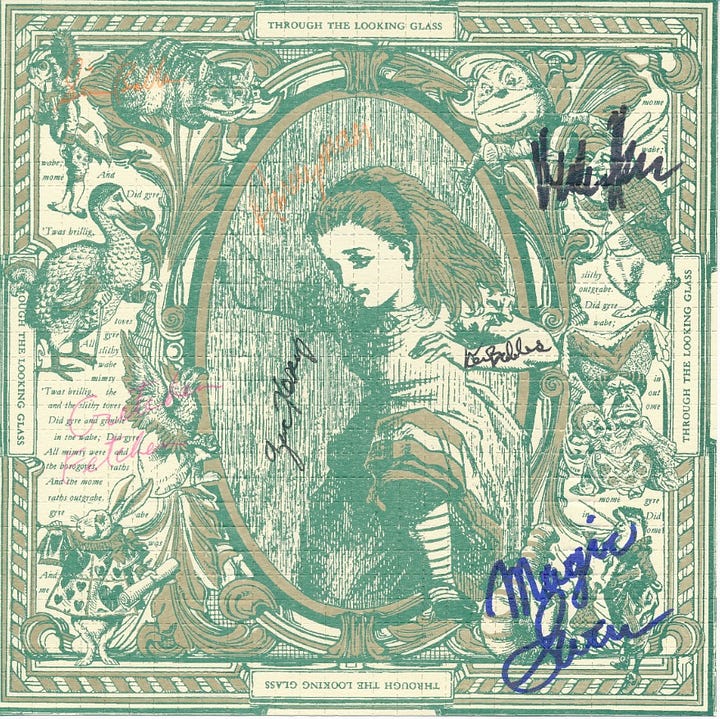
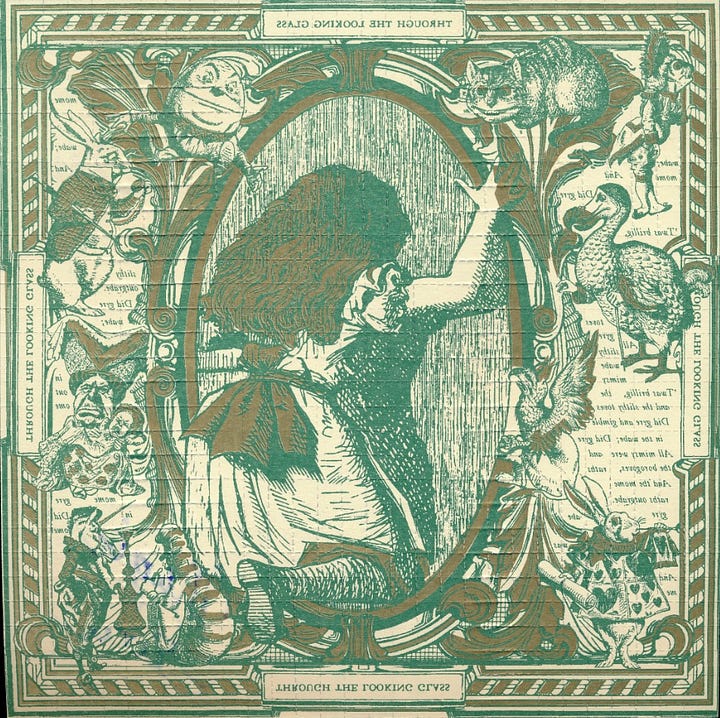
And so it came to pass that the tales of the Merry Pranksters and their tour inspired McCartney with an idea for a filmed journey that would blend counter-cultural ideas with a much older tradition - the bus ‘mystery tours’ of the Beatles’ youth in the North of England:
“It used to just be called a mystery tour, up north. When we were kids, you'd get on a bus, and you didn't know where you were going, but nearly always it was Blackpool. From Liverpool, it was inevitably Blackpool and everyone would go, 'Oooo, it was Blackpool after all!' Everyone would spend time guessing where they were going, and this was part of the thrill. And we remembered those.
So much of the Beatles' stuff was a slight switch on a memory; in 'Penny Lane', the nurse and the barber and the fireman were just people we saw on a bus route, but this time they'd be with us. So we'd always just heighten the reality to make a little bit of surreality. That we were interested in.
-Paul McCartney4
A little bit of digging shows that Abbotts Coaches were one of the 1950s/60s favourites, and I found this image of “Blackpool Belle”, a yellow bus, somewhat reminiscent of the Magical Mystery Tour bus.

On a flight back from the US, inspired by hearing about Ken Kesey and his Merry Pranksters, McCartney began sketching a picaresque narrative with an episodic structure that felt ‘like a dream’, or ‘a trip’:
“I had a big piece of paper and just drew a circle in the middle: ‘Magical Mystery Tour’. Then I just put things around it – like 'stripper on the bus', 'magicians', 'a marathon'… very random ideas.”
-McCartney, quoted in Barry Miles’ Many Years From Now
This loose plan, or structuring idea, McCartney referred to as “the scrupt”.
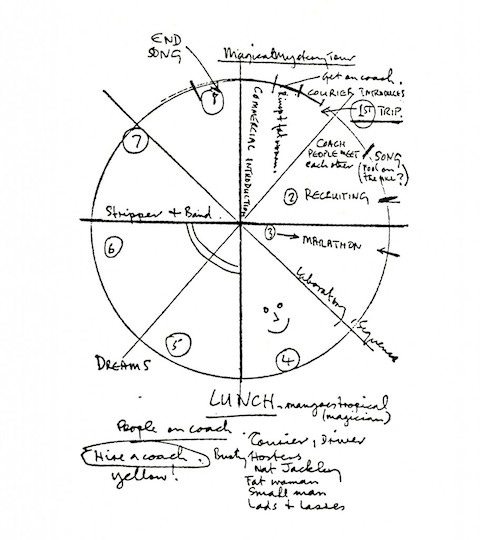
Wolfe’s dramatis personae are a cast of curios like ‘Cool Breeze’, ‘Mountain Girl’, ‘The Flag People’, ‘The Hermit’, ‘Zonk’, ‘Stark Naked’, and ‘Freeloading Freddie’. Magical Mystery Tour also brings its own characters: ‘Buster Bloodvessel’ (played by Ivor Cutler), ‘Aunt Jessie’, the ‘Courier’, the ‘Fat Lady’, ‘Jolly Johnson’ and George dressed as a rabbit, or hare.
It’s not the last time Beatles will dress up as animals - Ringo’s a rabbit-like creature in Born to Boogie in 1972 and plays the Mock Turtle in 1985. But we now have the receipt for animal costumes that make the Wonderland connection clear.
Check out “march hare, mask and hood”:
Contemporary reviews immediately make the link. NME’s Nick Logan paints a picture where the “the four musician-magicians take us by the hand and lead us happily tripping through the clouds…past the fool on the hill…into the world of Alice in Wonderland”.5 Penny Valentine, in Disc, meanwhile,6 sees in ‘I Am The Walrus’ “shades of ‘Alice in Wonderland’ and extraordinary things going on in the backing that nobody will understand”.
Of course people have spent decades trying to understand it, and we now know a lot more about how it all came together, but of course this is the Carrollian fulcrum of Magical Mystery Tour, sonically, lyrically and visually.
We’ve already explored Walrus in another post, so I won’t repeat myself too much, but we know from interviews that it’s a riff on Carroll’s ‘The Walrus and The Carpenter’, with Humpty Dumpty cast as eggman.
It’s the strongest, as well as strangest, song on the album and one of the key scenes in the film, complete with anthropomorphic Beatles, policeman in a row, and John in a lunatic cap. Beyond the episodic dream narrative, the film also features the Beatles as magician guides, spinning camerawork and kaleidoscopic mirrored images that reinforce the Alice-y elements picked up on by critics.
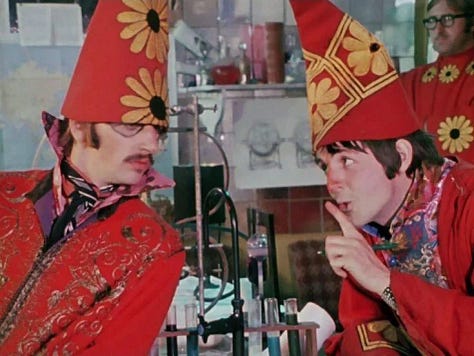
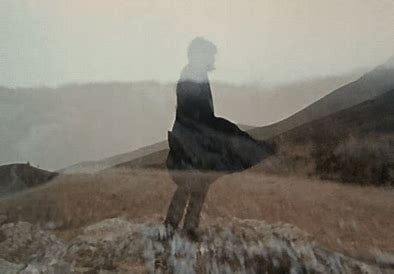
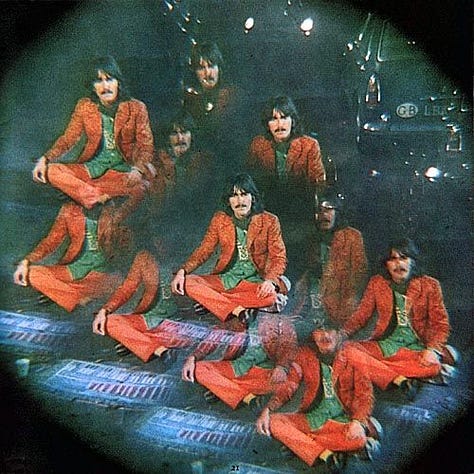
Magical Mystery Tour was - ludicrously in retrospect - shown on the BBC in black and white, eroding the psychedelic impact of a work that was, at the time, seen as the Beatles biggest flop and first mis-step. But as a folding back of countercultural influences into English traditions and music hall comedy, it’s an important piece of the puzzle.
If nothing else, it’s a reminder that 60s culture was a transatlantic dialogue, an exchange of subversive and traditional ideas, with Carroll at its heart. After all Alice’s adventures are their own kind of mystery tour, full of strange encounters, comedy, inversions and circular logic.
Over and out. Till next week.
According to setlist.fm it’s Feb 2nd 1987.
[Note to self - I need to track down a review of this gig in the NME archives.]
Courtesy of Alan Tannenbaum: “This masterpiece was created by Mark McCloud (the "father" of blotter art), and is widely considered to be the quintessential of blotter art. This sheet was hand signed by seven members of the Merry Pranksters: Simon ("Lightnin'") Babbs, Linda ("Anonymous") Breen , Mike ("Mal Function") Hagen, Gretchen ("Slime Queen") Fetchin, Zane ("Chicken Leopard") Kesey, Ken ("Intrepid Traveler") Babbs, and John ("Magic") Swan. See AT2603 for another copy, signed by Timothy Leary. This print is double sided and the imagery on the front is printed in reverse on the rear. From the era of highly decorated printed sheets of "blotter paper acid", i.e., absorbent paper infused with the hallucinogen LSD and perforated so one could access the individual doses. This particular artwork was available in several colors, with varying degrees of scarcity: Kelly Green (this one), Cream, Chartreuse, Burnt Orange, Mustard Yellow, Dayglo Pink, Electric Blue, Light Pink, Chocolate, Marble/Grey, Lavender, and Red. A decorated 45 RPM record printed on both sides by Amber Asylum was inspired by this image. Ken Kasey died in 2001. Signatures validated by Zane Kesey (Ken Kesey's son) in 2022.”
NME, Nov 25th 1967.
Disc, Nov. 18th 1967.







